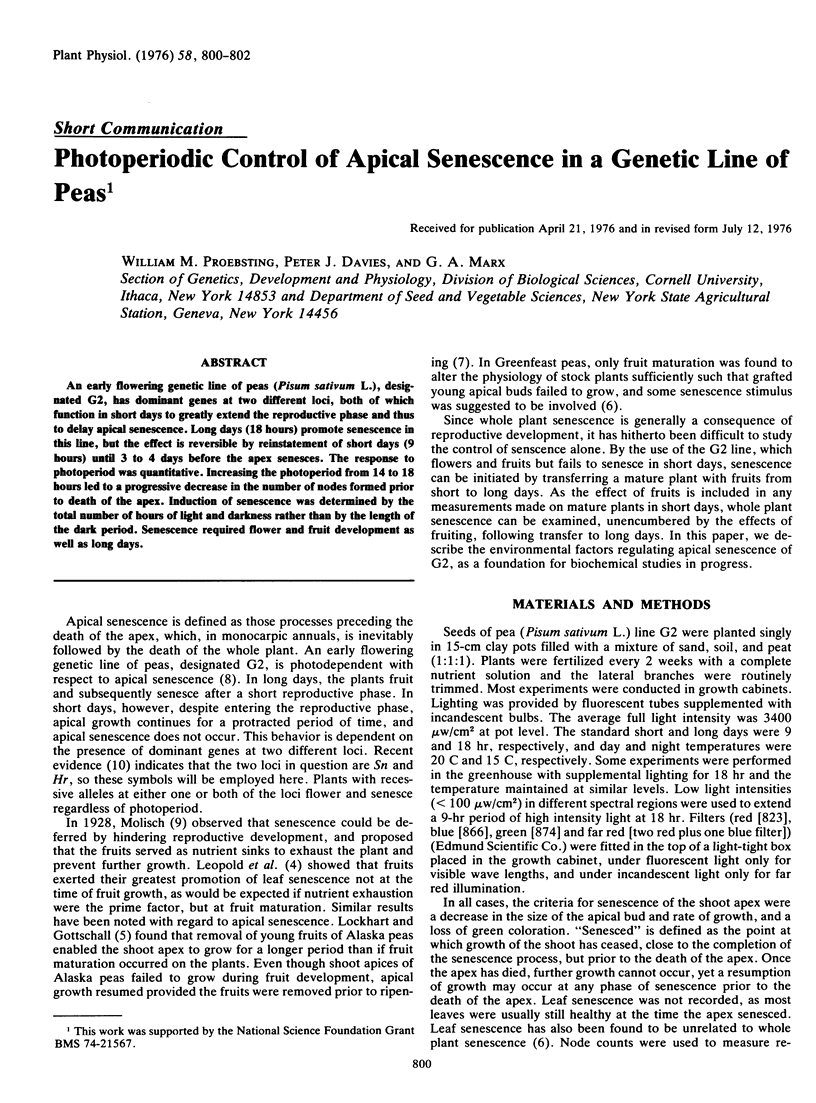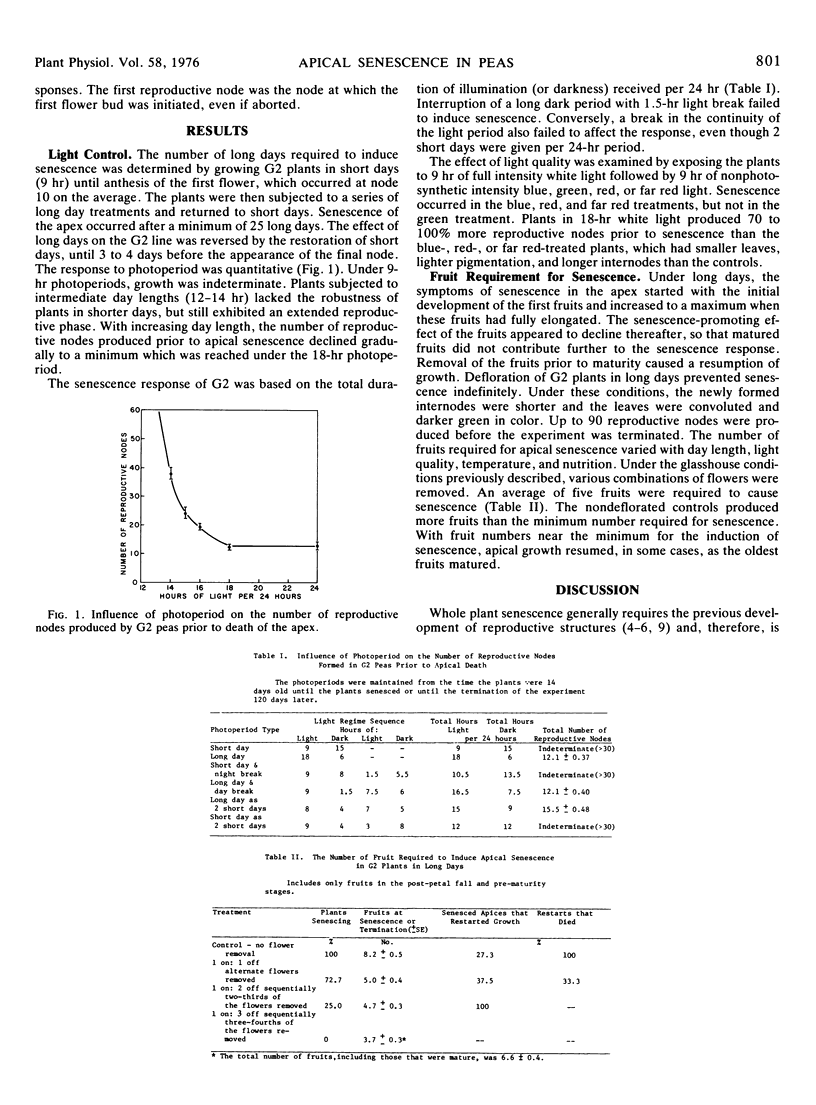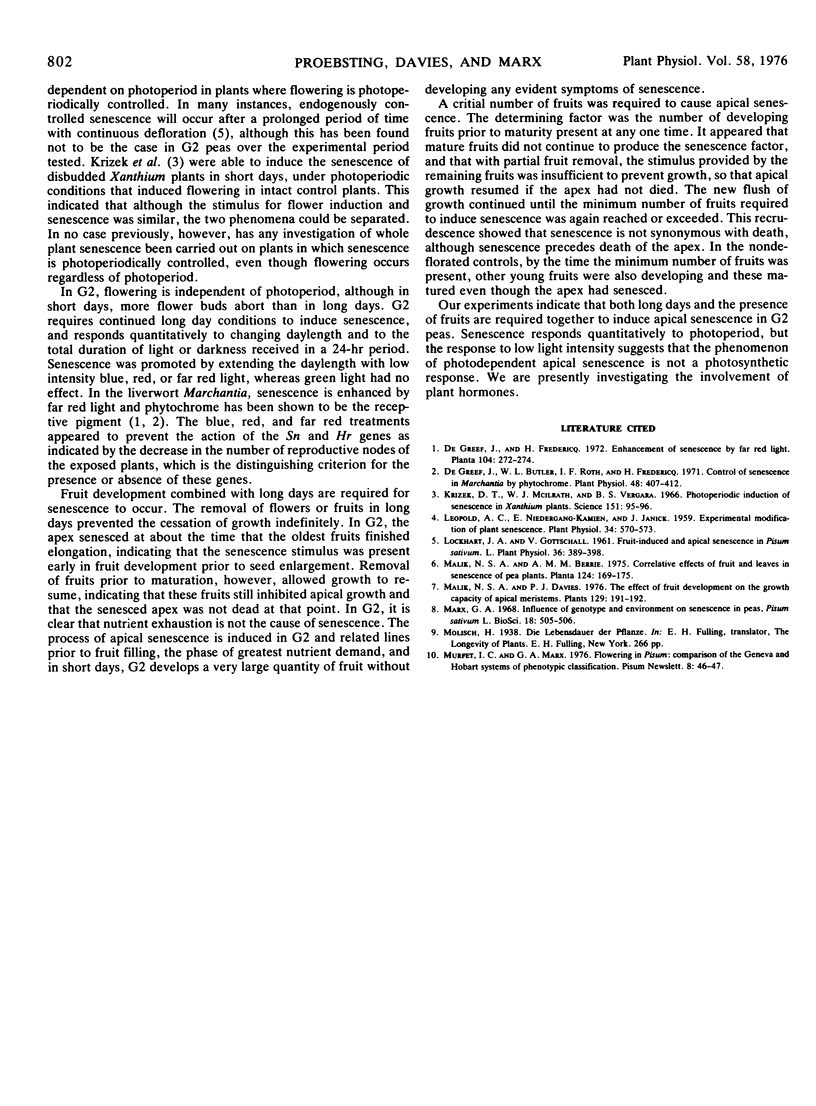Abstract
An early flowering genetic line of peas (Pisum sativum L.), designated G2, has dominant genes at two different loci, both of which function in short days to greatly extend the reproductive phase and thus to delay apical senescence. Long days (18 hours) promote senescence in this line, but the effect is reversible by reinstatement of short days (9 hours) until 3 to 4 days before the apex senesces. The response to photoperiod was quantitative. Increasing the photoperiod from 14 to 18 hours led to a progressive decrease in the number of nodes formed prior to death of the apex. Induction of senescence was determined by the total number of hours of light and darkness rather than by the length of the dark period. Senescence required flower and fruit development as well as long days.
Full text
PDF


Selected References
These references are in PubMed. This may not be the complete list of references from this article.
- De Greef J., Butler W. L., Roth T. F. Control of senescence in marchantia by phytochrome. Plant Physiol. 1971 Oct;48(4):407–412. doi: 10.1104/pp.48.4.407. [DOI] [PMC free article] [PubMed] [Google Scholar]
- Krizek D. T., McIlrath W. J., Vergara B. S. Photoperiodic, induction of senescence in xanthium plants. Science. 1966 Jan 7;151(3706):95–96. doi: 10.1126/science.151.3706.95. [DOI] [PubMed] [Google Scholar]
- Leopold A. C., Niedergang-Kamien E., Janick J. Experimental Modification of Plant Senescence. Plant Physiol. 1959 Sep;34(5):570–573. doi: 10.1104/pp.34.5.570. [DOI] [PMC free article] [PubMed] [Google Scholar]
- Lockhart J. A., Gottschall V. Fruit-induced & apical senescence in Pisum sativum L. Plant Physiol. 1961 Jul;36(4):389–398. doi: 10.1104/pp.36.4.389. [DOI] [PMC free article] [PubMed] [Google Scholar]


